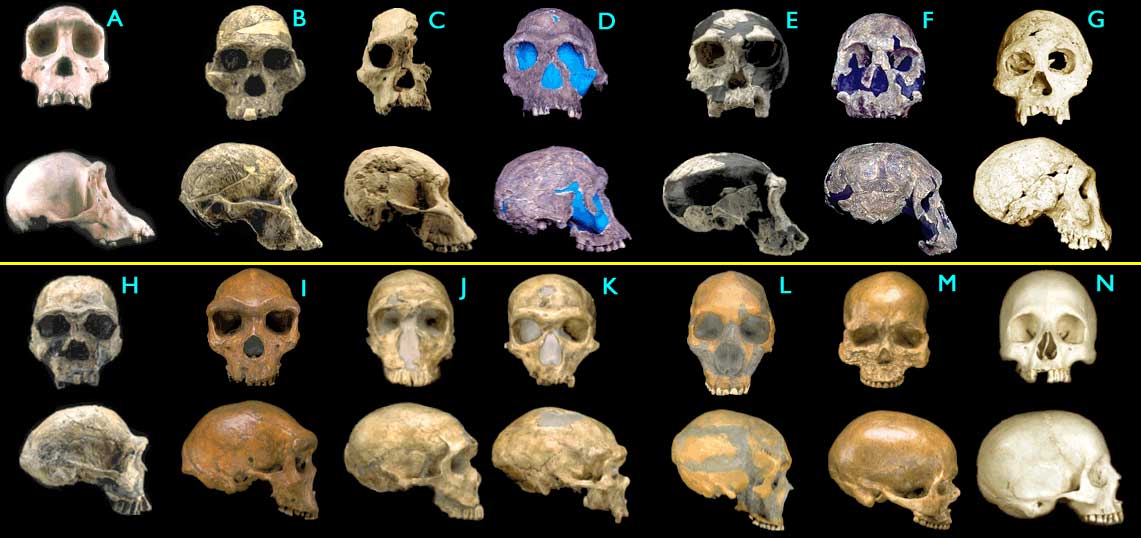As a first check - only a place to start, (. . . ) one could hear their claim at 44:40 in the "cornerstones" video you gave, that there are no ape/human fossils - all are either fully ape or fully human. This can be looked up in the index above, in the paleontology section, to CC050, to see that we have plenty of transitional ape/human fossils, and that they clearly aren't "fully ape" or "fully human", as can be seen in the skulls themselves (linked to at cc050).
Skull "A" is a modern chimp. You can see that skull "B" is very similar - pretty much an ancient ape. The rest of the skulls are transitional, each being younger than the one before it, up to modern humans. C is a little more human, D, a little more human, etc. Skull N is a modern human.
Papias
This kind of evidence is utterly inconclusive. Similar morphology in the living species is never considered the basis for descent between them. It's far more complicated than that.
So let's tackle the issues one at a time, good-diagnostics style.
First and easiest is the skull morphology alone, without regard for the dating issues. By analogy we could use any of a host of animals or plants, either current or fossilized examples, or both. And if we include fossils at all in comparison, then we can best see the problem of your logic by looking at any of the far more numerous fossils of some plant that still exists today.
But, for the interest of a wise diagnostic, let's first just stick with plants or animals that are current.
"But", your logic still hums along in the background, "Many plants and animals are empirically known to have changed over time. For example, look at the change wrought in the canidae in just a few hundred years."
Right. Yet, I am unaware of any claim that a species of, say, dandelion has been breeded into becoming a rose, or of a wolf into becoming a puma. You may say this is immaterial and ridiculous, but you will have missed the point. The point is not genetic macro-morphology, as you assume. It is a complex issue, not one that takes its cue from a single, and conceptually very generalized, phenomenon.
But, you are trained to think that a very little sampling of skull morphology, combined with a little dating claims,
establishes beyond doubt that some population of "ape-like"
apes in the past evolved into what now are any-and-all modern humans.
Yet the primates (including humans) are more complex than roses, and thus they are not just their skulls. So, even if gradual-and-random genetic
progressive evolution were real, there is not even enough time in the past universe for apes to have evolved into humans.
According to your simple logic, all we need to establish that some modern humans are (d)evolving into apes is to find some modern human who, because of some disease, has his skull deformed in a way that makes it look more like that of some present ape's than like that of the average European.
There are some modern breeds of dogs that look more like cats than like wolves. But I don't hear a single professional biologist claim this proves that the canids are the product of the evolution of non-canids. Such an evolution is believed, but on what basis?
You are trained merely to jump to the particular conclusion that you already assume. The question is why you keep assuming it, or, more importantly, why you have adopted it in the first place. That, too, is a complex issue.
.


